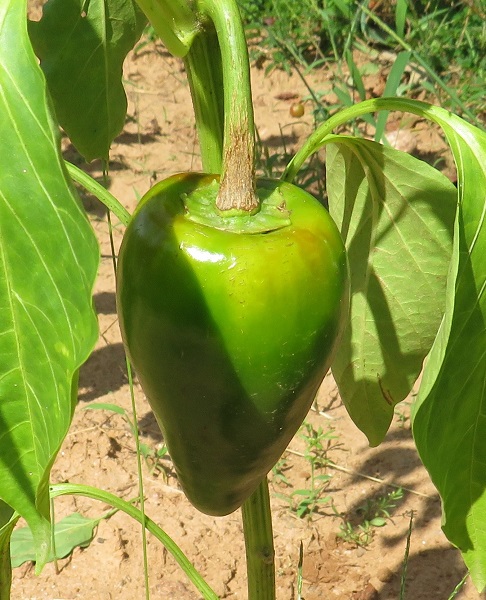
A tip of the hat to Kathy Wise for correctly identifying this as a Pimento Pepper, also known as a Pimiento. Some people say it was originally found growing in the Americas by Christopher Columbus, who took the seeds back to Spain. The people of Spain developed ways to process them and popularized them. The pepper would come full circle when George Riegel, a farmer from Spalding County, Georgia, saw the canned Spanish Pimentos in a store and bought a few cans. Mr. Riegel, with the help of Congressman Charles Lafayette Bartlett of Macon, was able to acquire seeds for the pepper from the Spanish consul. The Reigel family improved the pepper and eventually developed the variety you see in the photo, known as Perfection. The photo shows the pepper in its early stage of development, but it will turn red eventually.
The Riegels built a large processing facility in Pomona in 1916, a few miles from Griffin known as The Pomona Products Company. The pimento crop would grow over the years, concentrated in a 15-county area around Griffin. In 1916, the total pimento crop was 75 acres. By 1950, the pimento crop peaked at 32,000 acres. That’s a lot of peppers.
The popularity of the pimento had an impact on Dutchtown. With the boll weevil driving down yields on cotton, planting several acres in pimentos provided some additional cash. Sure, peppers were labor-intensive, but the children needed something to do, right? My father specifically remembered them being planted on the 4+ acre strip of land my grandfather owned north of Jonesboro Road and west of Chambers Road – the very land where my childhood home was built (and also the homes that belonged to Uncle Ralph and Aunt Ethelyn Steele, and Uncle Monroe and Aunt Maurine Wise). When I asked my mother about them years ago, she just recalled them getting heavy after a while. On the other hand, my father just remembered that after the first frost, when the crop was ruined, they would go out into the field and throw them at each other.
I don’t know that they were ever grown here in my lifetime until I planted a few this year in my garden, but they were a part of our history.